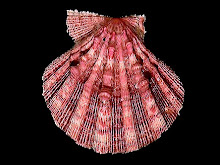What does it mean to "mow the lawn"?
When you utilize backhoes or other machines, like bobcats or sodcutters, and remove the top layer of sod containing all the native seeds from the earth that have survived your consistent mowing habits and non-native plant revegetation pleasures, will the native plants survive? And when you make laws requiring that a resident remove native plants through non-native species requirements, grass, shrub, and tree height requirements, or landscaping requirements, what are you doing to the food sources for native wild animals?
When you use non-organic fertilizers, herbicides, and pesticides, are you not poisoning the environment of the city and non-city entities by causing bioaccumulation and a reduction in native wildlife through minimization and contamination of native arthropoda (an invertebrate animal of the phylum Arthropoda, including insects, crustaceans, arachnids, and myriapods) populations? Even using organic pesticides still minimizes arthropod populations and causes a disruption. If bird populations are in drastic decline, insects are poisoned and declining, and wetlands dredged, pipelined and filled, what is spreading new native flora seeds? What flora are surviving the blades of the mowers to flower, for the few insects to pollinate?
Well, here is a study on the effects of the removal of plants and trees which is thought to possibly reduce water levels and water quality. It may just be another reason we should re-examine our habit in molding our world to suit our needs, investigate the consequences of such actions before acting them out. A study on Water Quality. I believe this paper would have been much better had it not geared towards a profit in draining water from wetlands and increasing water yields for human use. Evapotranspiration is the loss of water by evaporation through soil and through transpiration, the act of releasing vapors from the stomata of plant tissue. It may be that natural evapotranspiration from flora is necessary in helping create higher annual rainfall indexes, while maintaining minimal soil evapotranspiration. The water quality study points out that cutting trees and other vegetation around waterways will increase the flow of water and soil evapotranspiration. Of course it will. But this also creates a different kind of ecosystem, increases erosion and lessens sedimentation and natural filtration, among other problems.
The "lawn" does not need a manicure, nor food, nor removal of "pestilence". "It" needs to be left alone, as "it" stands, to grow to be six feet high, if "it" wishes! And the lakes do not need to be trimmed along their banks, or the bushes hedged. No caring mother would want to look at any more poisonous oleander bushes planted in cute little rows all in the name of petty landscaping! Lawns and unnatural landscapes are neither viable nor sustaining in biodiversity, nor function as accurately as native flora in its natural numbers. If landscaping and "lawn" restrictions were lifted so that residents could let natural Florida flora take their intended place and course, it is feasible water consumption could be curtailed immensely. Man-made landscaping is repellent, repulsive, and revolting, and its popularity is sadly amusing. To think that humans believe they can create better than what is already there.
It's a wonder if evapotranspiration could possibly aid in the spread of pollen, another way that flora have adapted to propagate. Are we cutting their chances with our actions, literally?






0 Comments:
Post a Comment
<< Home